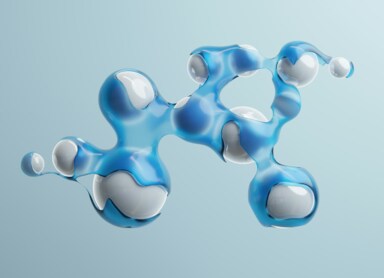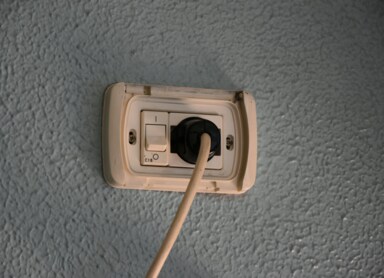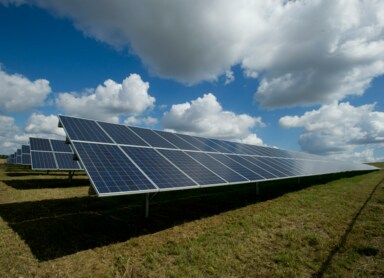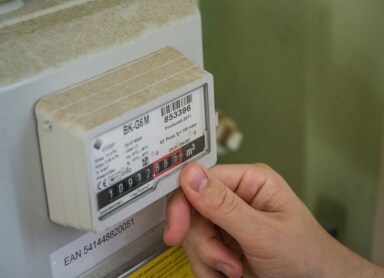How is hydrogen produced? Electrolysis – what is it and how does it work?
Ecological hydrogen as an energy source is one of the directions in the development of renewable energy. However, to enable its large-scale use, it is necessary to apply an easy, efficient, and inexpensive method of its production. Currently, green hydrogen can be obtained in several ways – through steam reforming of natural gas, photosynthesis, fermentation, and the electrochemical method, that is, electrolysis. Here we explain what hydrogen electrolysis involves.
Electrolysis – what is it and where is it used?
Electrolysis is an electrochemical method of hydrogen production. It is no longer considered new, as it was invented and first applied in 1800 by two scientists, Nicholson and Carlisle, who observed that water breaks down into ions under the influence of electricity. The process involves subjecting water to electrical energy, which causes the water molecules to split into hydrogen and oxygen. Chemically, this process can be represented as follows:
2H₂O → 2H₂ + O₂
Hydrogen produced through electrolysis is extremely pure, reaching up to 100% purity. The main advantage of this production method over others is that it does not produce pollutants. This is crucial for environmental protection and preserving biodiversity. Literature often notes that converting electrical energy into high-quality gaseous products can be used as a method to balance the power system during periods of renewable energy overproduction. This can at least partially reduce the strain on the distribution network.
Hydrogen electrolysis – a way to clean energy?
Currently, hydrogen is not the most popular energy source, though its popularity is gradually increasing. It is mainly used to power transportation, in industry, the heating sector, and as a way to store energy from renewable sources. Hydrogen is produced using so-called electrolyzers, which can be divided into three types:
- Alkaline Electrolysis Cells (AEC): This is the cheapest and simplest method of hydrogen production but has some drawbacks. AEC models have a long startup time and relatively short lifespan—electrolysis efficiency begins to decline after around 5 years.
- Proton Exchange Membrane (PEM) Electrolyzers: These are characterized by smooth, stable operation and quick startup, though they are more expensive than AEC.
- Solid Oxide Electrolyzers (SOEC): Mainly used for highly specialized applications due to their high operating temperature range, short lifespan, and high cost.
A drawback of electrolysis is the relatively short lifespan of the devices. For AEC technology, it is below 100,000 hours; for PEM, between 10,000 and 50,000 hours; and for SOEC, between 10,000 and 30,000 hours.
It is estimated that by 2050, 25% of global hydrogen will be produced via electrolysis. Interestingly, hydrogen can also be produced through biomass gasification. While electrolysis is zero-emission, using biofuel can even have negative emissions, meaning it positively impacts the environment.
Electrolysis of water – what is released during the reaction?
The effect of water electrolysis can be illustrated by a simple principle: oxygen is produced at the anode, and hydrogen at the cathode.
-
The anode is the positive electrode (+). During electrolysis, oxidation occurs at the anode, producing pure oxygen gas. This oxygen can be used in medicine or industry, as an oxidizer or shielding gas.
-
The cathode is the negative electrode (−), where hydrogen ions are reduced, resulting in gaseous hydrogen.
Electrolysis requires an electrolyte—a liquid environment where the reaction occurs. Depending on the type of electrolyte used, other compounds may also be released in the chemical reaction.
Electrolysis of water: chemical reaction and process
Water electrolysis involves dissociation—splitting—into oxygen and hydrogen atoms under an electric voltage of at least 1.229 V. Although the structure of different electrolyzer types varies, the electrolysis process and its products always remain the same. The electrolyzer is powered by renewable energy sources, e.g., solar or wind energy, making it virtually maintenance-free, cost-effective, and efficient.
The reactions at each electrode are as follows:
- At the cathode: 4H⁺ + 4e⁻ → 2H₂
- At the anode: 2H₂O → O₂ + 4H⁺ + 4e⁻
- Overall equation: 2H₂O → 2H₂ + O₂
Demineralized water is used, roughly 9 liters per 1 kg of hydrogen produced and 8 kg of oxygen. Despite appearing uneconomical, electrolysis still consumes about 40% less water than, for example, petroleum production.
It is important to remember that while hydrogen itself can be used regardless of weather conditions, the efficiency of renewable energy installations depends on many factors, and proper design is necessary to maximize benefits.
How Is hydrogen produced? Step by step
For large-scale hydrogen production, hydrogen generators are used. These are extensive and complex infrastructures that produce hydrogen efficiently. They consist of:
- Electrolyzer cells
- Substrate preparation installations
- Heat exchangers
- Electrolyte composition preparation systems
- Control systems
- Fans
- Separators
- Other installation elements
- Circulation pumps
Each module contains cells where electrolysis occurs. Generators centralize the process and increase efficiency, ultimately reducing raw material costs. Generator power is standardized at 1 MW. Depending on the size of the desired installation, individual blocks can be combined.
Electrolysis and beyond – how is green hydrogen stored?
Currently, the most efficient hydrogen storage method is compression and storage in a gaseous state. Special high-density steel tanks are used, capable of withstanding several hundred bars of pressure. A drawback is that hydrogen tanks must be maintained at very low temperatures, below −250 °C.
The future of green hydrogen in Poland and Europe – is it worth waiting for?
Over time, electrolysis is likely to become the primary technology for green hydrogen production due to its efficiency and relatively low costs. Is the Polish energy sector keeping up with this trend?
Poland’s hydrogen strategy until 2030, with a perspective to 2040, sets six goals to guide changes in the Polish energy industry:
- Implement hydrogen technologies in energy and heating systems
- Use hydrogen as an alternative fuel in transport
- Support industrial decarbonization
- Produce hydrogen in new installations
- Ensure efficient and safe transmission, distribution, and storage of hydrogen
- Create a stable regulatory environment
Hydrogen use in energy is becoming a goal for an increasing number of enterprises. It is certainly a promising direction that—although requiring significant financial investment—can yield substantial benefits.






